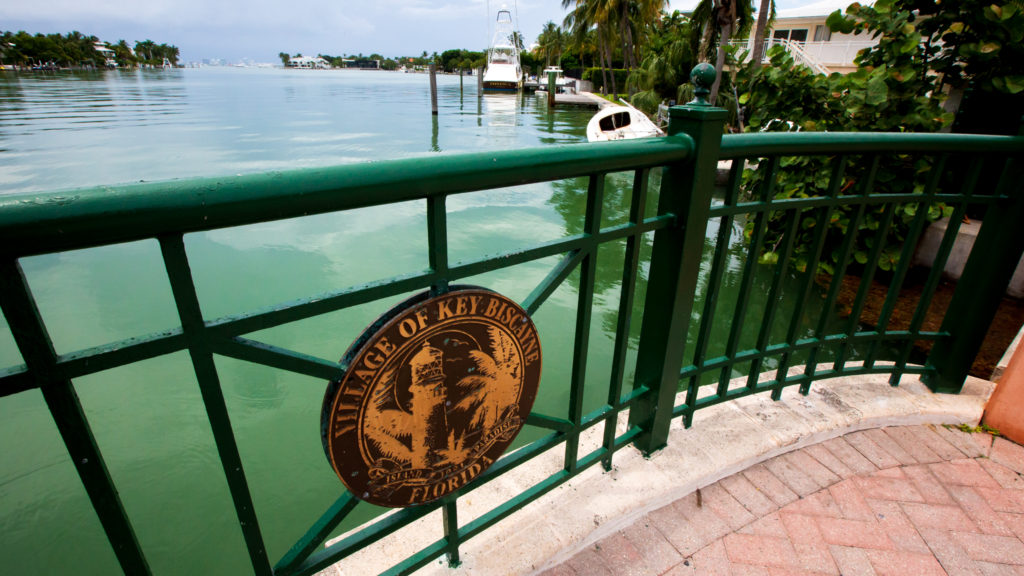Village Moves to Ban Fishing on Mashta Bridge
Annali HaywardSeptember 2, 2019

A view from the Mashta Island Bridge looking toward Biscayne Bay during a King Tide, Aug. 6. 2019. The Key Biscayne Village Council is considering banning fishing from the bridge after resident complaints, but dozens of people have signed a petition to allow fishing to continue. (Key News/Tony Winton)
To whoops and applause the Council sided with a group of three residents of Mashta Island who called for the ban.
The group presented a slideshow of pictures of fishing activities and related debris on the bridge. One alarming image showed a discarded serrated knife. Alexander Hernandez-Dessauer said most of the photos came from a WhatsApp group where “hundreds of voices of residents” share their daily observations. They also shared concerns for the safety of teens who jump off the bridge and children who are unsupervised in the roadway.
But not all Key residents were pleased with the decision, which was taken before any opponents could be heard. Resident Elana Festa started a petition on change.org the next day, calling for a “reasonable” solution across community groups rather than an outright ban. “Let’s address the issues but not remove the wonderful and truly special privilege that we have. We can do better,” the petition says.
At publication time, 42 people had signed it.
“We are sensitive to the image of the grandpa teaching his kids to fish,” said Hernandez-Dessauer later. “But based on my daily observations, this is not that.”
Those who spoke at the meeting said they see fishermen who appear to be working “professionally,” using multiple lines.
Police Chief Charles Press also spoke in favor of the ban, saying it has turned into a trespass issue. Since January police have taken a signal at the bridge 143 different times and “visited Mashta island 1,050 times on the radio officially,” Press said.
“We have written citations and moved people off, but people with licenses can stay for hours,” he said. He added the Public Works department currently cleans the area as needed, creating another cost — though no figures were provided.
“Obviously the issues that were presented are valid,” said Festa. “But I know some of the residents who spoke, and I don’t think they’re against having some fishing — it’s just how we do it, what ideas can we come up with?”
One idea could be to involve youth in cleaning up as a way of keeping their permits.
The resident group also said fish stocks had been depleted in the area. On a visit this past week, bass, parrot fish, crabs, a manatee and even a bull shark were visible around the bridge along with the usual needlefish. Festa said she has not personally seen excessive fishing, “But that doesn’t mean it didn’t happen.”
Mother and resident Leonor Volante said she passes by the bridge every day, often bringing her kids to look at the fish. Without providing evidence, she said “I have never seen those five-pole, multiple lines. Usually just one guy, or families.”
The item was tabled for discussion at Tuesday’s Council meeting by Council Member Luis Lauredo, who said the issue was “ruining a whole neighborhood.”
Hernandez-Dessauer said Lauredo was attentive to resident concerns and “will hear you.”
Village Attorney Chad Friedman confirmed it is lawful for Village Manager Andrea Agha to carry out the Council’s directive, and that there will still need to be the usual first and second ‘readings’ at regular Council meetings to fully repeal the ordinance.
There are currently 14 ‘master’ permits; six for residents charged at $10 each per year and eight for non-residents at $50 annually. Four residents are also ‘subsidiaries’ on a master permit, bringing total permit holders to 18.


